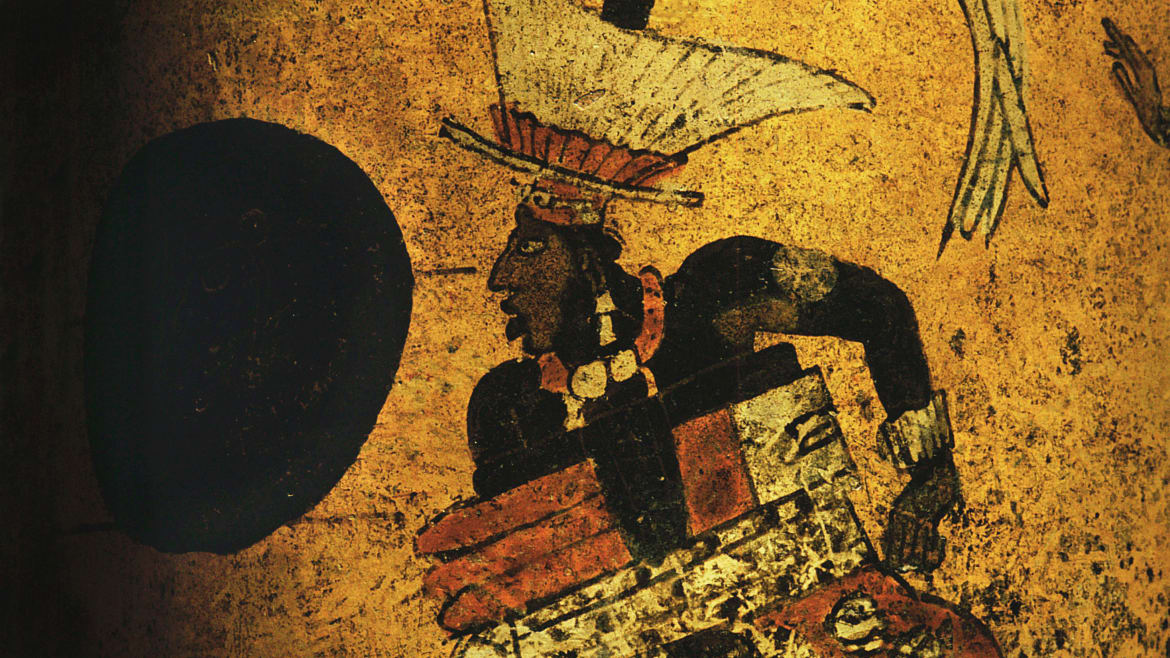Werner Forman/Universal Images Group/Getty Images
When you finally depart the mortal coil what would you like to happen to your remains? Perhaps you picture a traditional burial or want your ashes sprinkled in the sea? Maybe you’d like to be turned into jewelry, travel to space, or decompose into a tree? If you were an ancient Mayan, a new archeological theory suggests, perhaps your goal wasn’t a generation in a vase on the family mantle, but rather to spend your ashy afterlife as the innards of an ancient ballgame?
For scholars, the ‘ballgame,’ as it is known, was one of the most important religiously and culturally significant aspects of Mayan society. The game, which used a rubber ball, was played by two opposing teams on an “I” shaped court. Ball courts have been identified in numerous ancient Mayan cities and literary and artistic references to them are found throughout the Pre-Columbian Americas. The rules of the game are unclear and fiercely contested, but some have likened it to racquetball. The ball itself ranged in size from that of a softball to that of that of a soccer ball. Though the rules of the game undoubtedly changed over time and throughout this large region, the ballgame is one of the cultural links that connects the Mayan cultures of Mexico, Honduras, Belize, and Guatemala. Archeological evidence suggests that it was played as far north as present-day Arizona and New Mexico and as far south as Columbia.
Mythological portrayals of the Mayan ballgame depict it as a violent and somewhat macabre underworld pastime. Popol Vuh, the three-thousand-year-old Mayan creation story of the K’iche’ people, recounts how the underworld included a ball court on which a game was played with the heads of humans or gods. According to the myth, the first set of twins, Hun-Hunahpú and Vucub-Hunahpú, also known as the Maize Gods, were invited to the underworld (Xibalba) to play a ballgame with the Lords of the underworld. The invitation was complimentary, but it was a ruse. (Allegedly the brothers had irritated the lords of Xibalba with the noise they made playing ball). Once they arrived in Xibalba they faced a series of deceptive and grueling trials that eventually lead to their death. They were sacrificed and buried at the Crushing Ballcourt there. The head of Hun-Hunahpú was hung from a tree and took on magical powers: it spat in the palm of one of daughters of the Lords of Xibalba and impregnated her. She then conceived the Hero Twins who returned to avenge and resurrect their father.

